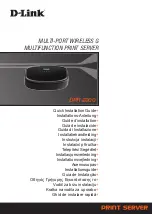
The
ftsmaint
Command
7-2
Express5800/
ftServer
: System Administrator’s Guide for the Linux Operating System
The task arguments are as follows (See also
ftsmaint
(8)):
•
ftsmaint
ls
path
This command displays the status of the hardware specified by the enumerated
path. Specifying a path displays a detailed status of the hardware at that path.
Omitting the
path
argument displays a less-detailed table of all fault-tolerant
devices on the system. See ‘‘
Device Path Enumeration’’ on page 7-5
for more
information.
Output from
ftsmaint
ls
path
reflects what the OSM reports about the state of
a given component. Because of system latency, this may not reflect the immediate
state of the device. However, you cannot, as a result of this discrepancy, issue a
command that would take the system offline. (See
ftsmaint bringDown
.)
To verify the actual state of the device, check the opstate of its LED.
•
ftsmaint
lsLong
This command displays the status of all fault-tolerant devices on the ftServer
system. This command also returns the status of “empty” devices such as
unpopulated PCI slots. This command is useful to study the addressable
fault-tolerant devices that can be queried or controlled with
Express Builder
software.
•
ftsmaint
lsPeriph
This command displays information about peripheral devices, such as CD-ROMs,
DVDs, and modems.
•
ftsmaint
lsVND
This command displays the status of the Ethernet channel-bonding interfaces in
the ftServer system.
•
ftsmaint
acSwitch
[ 10 | 11 ]
If you do not provide an enumerated hardware specification, this command toggles
the active compatibility of the I/O elements between I/O element 10 and I/O
element 11. If you do specify an I/O element, it forces the enumerated enclosure to
active status.
•
ftsmaint
bringDown
path
This command removes from service the CPU element, I/O element, or CPU-I/O
enclosure slot specified by
path
. No other devices are supported. When you bring
down a device, the effect on the system is the same as physically removing
CPU-0, I/O-10.
















































